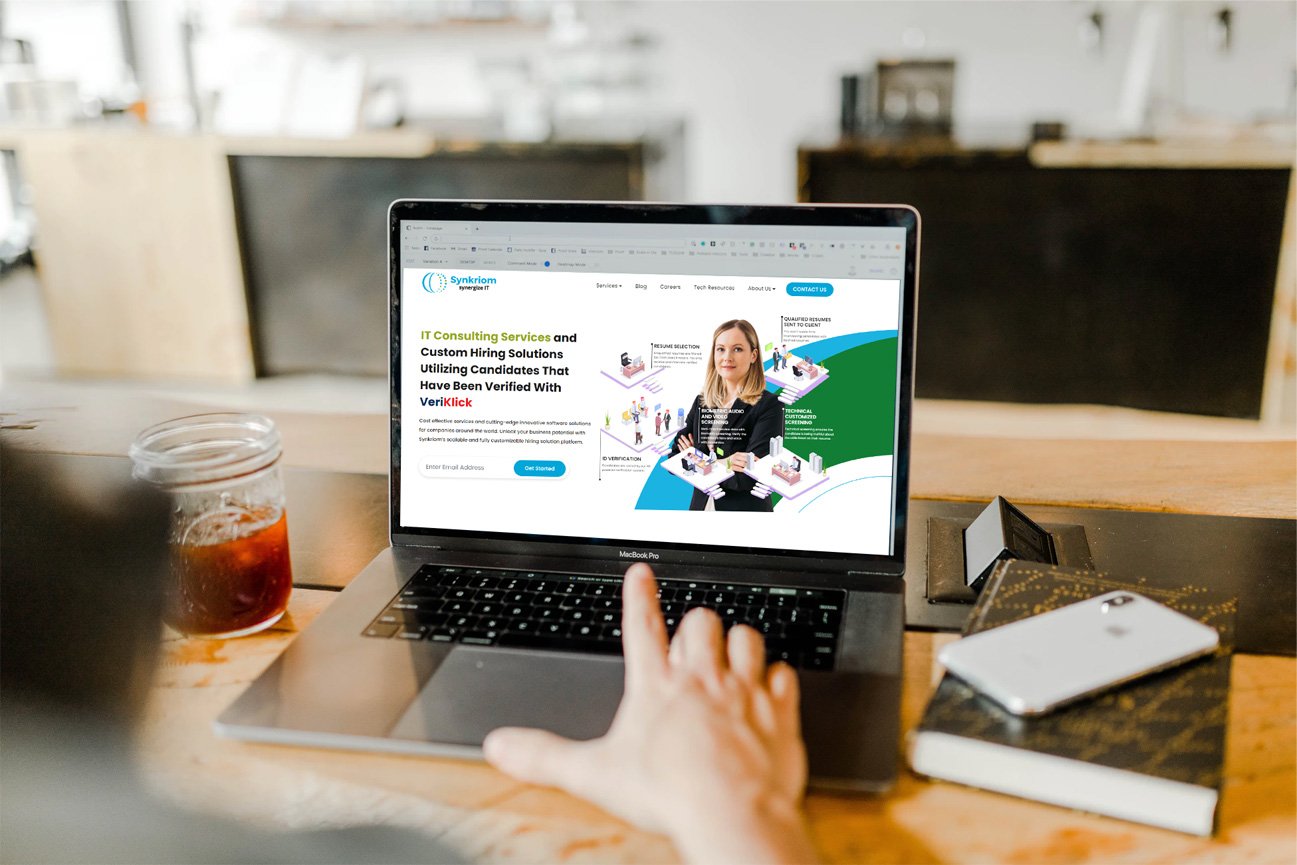Why Technology is Your Best Vendor Management Tool
July 28, 2021 By: Komal Dangi

In our modern world, it’s no secret that technology has undoubtedly made things easier. Though it has its dark sides, tech has become the solution to many problems in the world, either by eradicating a problem all together or making it much easier to handle and navigate in everyday life. When it comes to business and supplier management, the story is the same – technology is your best vendor management tool for smooth-flowing business operations between you and your vendors.
Of course, how and why tech is the best management tool for you does require some explanation.
Between the various vendor management providers and needs of a single company, finding the right fit can take time. What’s more, poor vendor management can lead to losses of profit, time, and morale for you and your partners, which can hurt your business in the long run. It only makes sense to be extra careful when finding the right tech solution for your company’s vendor management needs.
What is Vendor Management?
Before we can get into vendor management tech, let’s first define what vendor management is. You know that vendors are people or other organizations that can provide just about any service imaginable to your business. This means that whether it be a manufacturer, supplier, creative, or contractor, any entity that fills a need for your business is a vendor. Vendor management, then, is the practice of coordinating your relationships with your various vendors, typically through the use of a management system, software, or other technology.
Vendor management is so important because most companies have various vendors to keep track of. This means keeping up with the different relationships you have with the folks providing a service on your company’s specific schedule. By adopting a vendor management system, you you’re investing in a useful, affordable management tool that not only manages your vendors, but expertly integrates their work needs and schedule with your own, making for a smoother partnership.
Smart Market News claims that the “North America vendor management software market is expected to grow at a CAGR of more than 4% during the forecast period 2027.” The increasing trend of adopting tech-based solutions to streamline the business process is boosting the implementation of vendor management software.
When working with vendors and the surrounding tech for vendor management systems, you’re sure to come across some of the following lingo:
Vendor On Premise (VOP): Many companies will hire a staffing agency who then employs vendors to work on-site. This is most common when a company is experiencing high turnover or when a task or project needs a large staff to work in a short amount of time.
Vendor Management System (VMS): This will pertain to mainly tech solutions for a company.
Vendor Management Office (VMO): This is usually related to a company’s human resources department or it may stand alone as its own entity.
Manager Service Provider (MSP): This is a type of vendor staffing agency that helps recruit, source, and provide top notch talent in various fields.
Let’s go deeper. Over time, vendor management systems have undergone various changes and developments to become the tech you know and use today. Understanding where your VMS came from can help you grasp how best to employ it.
The Vendor Management Process
The vendor management process is made up of a few actions, which include:
Selecting Your Vendors
Before you can hire a vendor, you should go through a stringent selection process. This entails researching and sourcing vendors who meet your company’s needs and getting quotes through RFQs (requests for quotes) and RFPs (requests for proposal). Once you have enough potential vendors, create a shortlist of who you’re most likely to hire. When making your selection, keep cost in mind, but don’t forget about other factors such as the vendor’s reputation, capacity, and customer service record. All in all, a vendor who is reliable and communicates effectively is a far better choice than one with a lower price.
Negotiating Contracts
Once you’ve made a selection, it’s time to negotiate a working contract with your vendor. Getting your contract correct from the jump is important because it saves time for both parties and ensures everyone is protected by fair terms. This process can be lengthy, so put aside time for it to be done right. Define the goods and services you’re receiving, start and end dates, and all other essential details and conditions. A good rule of thumb is to have your contract examined by a legal professional before everything is signed.
Onboarding Vendors
Now that you’ve selected your vendor and signed the contract, it’s time to onboard. Vendor onboarding is another process that can take time due to the time involved in gathering necessary documents and information for vendor approval. In this situation, a management tool is more than welcome. Be sure to secure contact information, payment information, and other relevant information such as licenses, tax forms, insurance forms, and health clearances if applicable.
Monitoring Vendor Performance
Once your vendor is ready to work, keep an eye on vendor performance. This can be as simple as checking vendor performance against identified KPIs (key performance indicators) such as quality, efficiency, and volume of goods, services, and their delivery. If your vendor isn’t measuring up, you can use your management tool to give them clear goals to meet for improvement.
When It Makes Sense to Hire a Contractor
As you think about the types of projects you have available and the overall team structure you’re trying to build, it’s a good idea to weigh the benefits of a contractor versus a full-time, permanent employee.
There are a number of instances in which direct sourcing freelance or contract workers makes more sense than adding another full-time staff member to your roster.
Monitoring and Managing Vendor Risk
Once you have a vendor that’s secured one or two excellent performance reviews, don’t become complacent. You must always monitor your vendors for risks that may impact the company, and these risks may include lawsuits, data breaches, security issues, and compliance breaches.
Strategic Risk: Strategic risk can stem from contracting with vendors who don’t provide the services that you need to maintain proper operations. Making a poor choice among your vendor prospects can result in diminished earnings and capital.
Reputational Risk: Reputational risk can result from poor service from third-party providers. Their shortcomings can prevent you from delivering customer interactions in keeping with your standards.
Compliance Risk: Compliance risk is elevated when your legal or consumer compliance controls are lacking, rendering you unable to gauge your vendor’s compliance in key areas.
Operational Risk: Operational risk may result from a vendor’s technology failure, inadequate capacity to fulfill their contract, or error. In worst-case scenarios, if a vendor engages in illegal or fraudulent practices, they can stall your operations and require you to spend precious resources rectifying the situation.
Furthermore, if a vendor suddenly falls behind on deliveries, you must monitor how it will affect your company in general – will a missed delivery back up the whole process? Will it shut down operations? Keep this in mind when considering sticking with vendors or looking for new ones.
Paying Vendors
Finally, ensuring that your vendors are paid on time for their services is important for the professional relationship, your reputation, and honoring the contract. Failure to pay on time could have negative consequences for your company, further tying up operations and business.
Advantages of Using Technology as your Vendor Management Solution
In addition to being a simpler, smoother interface to work with, a VMS tech solution comes with valuable advantages that include:
A Centralized Information Base
Having all your pertinent vendor information in one place makes for a more efficient business. VMS tech allows you to have financial information, contracts, insurance certificates, security policies, and other necessary data collected and stored in a single safe place with easy access. Your vendors’ most important info is at your fingertips, organized and available when you need it most. What’s more, you can also track and store other information such as performance data, reports, number of employees, savings, profits, and more.
Decreased Vendor Risk
When vendor management is automated, there’s a better chance of catching vendor prospect risks quickly so you can fix the problem straight away. For example, if a vendor doesn’t have an insurance certificate on file, you’ll be immediately notified. This keeps you safe from any lawsuits that may arise and allows you to manage the issue in a swift, effective manner. A vendor management system gives you the opportunity to mitigate risks.
Enhanced Vendor Performance (with trackable metrics)
On the other end of the spectrum, when your vendor is doing a great job, you’ll want to recognize them and act accordingly. An automated VMS system provides you with the metrics to measure and track performance to see that quality standards are being met. In addition, a vendor management tech solution allows you to execute objective assessments of deliverables so that your vendors know exactly what’s expected of them and their performance. This leads to increased performance and quality control, turning your vendor prospect into a lifelong partner.
Strengthened Supplier Relationships
When you’re able to make standards and expectations clear to vendors, it lets them perform better on the job. When deliverables are on time, goods and services are of the highest quality, and your customers are happy, it all makes for a healthier supplier relationship. Good communication means better action, and a vendor management tech solution makes communication clear and easy.
Why Tech Is the Best Choice
Automating vendor management processes makes practical sense for your business. Manual operations have their benefits but using a vendor management tool to make things run more efficiently is the right solid choice for future success and growth. With so many moving parts to keep track of, sticking to manual operations runs the risk of increased errors and decreased performance when it comes to deliverables and labor. To make matters worse, the more mistakes that come up, the more time and money are wasted.
Few companies today can operate without vendor partnerships. Vendors are as widespread and necessary as an HR department for most companies, so finding a way to manage and monitor their many moving parts is a worthy investment.
To get the most out of your vendors, be strategic about management. It boils down to finding and using the best tool and tech for the job.



Leave a Comment
Your email address will not be published. Required fields are marked *